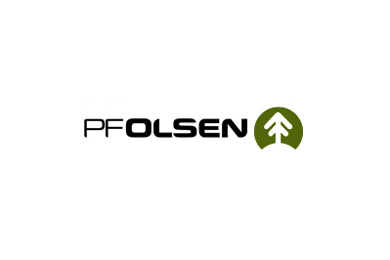Log Market Summary
July’s At-Wharf-Gate (AWG) prices for logs delivered to ports around New Zealand are relatively unchanged from June prices. However, some exporters have strategically changed some prices of various grades and lengths, but the overall average price remains unchanged. There has been the usual seasonal slow-down in log demand as the weather heats up in China and log stocks have recently risen by an average of 50,000 m3 per week to a current level of 3.7Mm3. Some log exporters are concerned the falling stock market and the weakening Chinese currency is denting confidence in the Chinese construction industry, but other log exporters are not so pessimistic on the Chinese log market.
The domestic market is still relatively flat for structural sawn timber and there are a few mills around the country reducing production slightly by undertaking maintenance etc. Sales of clear-wood timber are still relatively strong, with stable domestic demand and very strong demand from export markets.
The PF Olsen Log Price Index remained at $132 for July. While prices for pruned logs decreased in a couple of regions around the country, this was balanced by an increase in sale prices for structural logs, as well as pulp logs in the CNI. The index is currently $11 above the three-year average.
Domestic Log Market
Pruned
Mills report that their markets are the same as last month with good demand for clear-wood sawn timber. Domestic demand has been steady and export markets have been very stable with increasing demand due to strong construction figures in both Europe and the USA. Some mills are actually oversupplied with pruned logs and are having to limit log supply, as many forest managers have scheduled winter harvesting in the flatter blocks with easier access that tend to be pruned.
Non-pruned
The domestic demand for structural timber is still flat. Actual housing starts in New Zealand seem to be about 20% behind consents granted. Market commentators aren’t too sure of the reason(s) why this is the case. Many mills in NZ aren’t “busting a gut” with production and some are taking extra days off for worker rotation and maintenance etc.
Overseas, the prices for lumber in Maine, USA have doubled in the last six months. The US construction industry has rebounded with pent up demand for new houses and renovations after the recession and rebuilds and renovations required after recent hurricanes and other weather events that require. This surge in demand has coincided with a restricted supply of lumber. This restricted supply is caused by a combination of some significant forest fires in western Canada last year that caused some mills to close for two months, the trade dispute between the United States and Canada, and a shortage of railcars and trucks to move the product.
The European Organisation of the Sawmill Industry (EOS) held its Summer General Assembly in Oslo in June. Their softwood sawn-wood markets were in general described as ‘rosy’ due to healthy construction in Europe and lively demand from importers with the two main markets being the US and China. Collectively their main concerns were around log supply (Sound similar to NZ?). This lack of raw supply is even more pronounced for hardwood mills as hardwood logs are exported to China. (As an example, in 2013 the EU exported 200,000m3 of oak logs to China, and in 2017 exported 600,000m3). These factors indicate there is unlikely to be any significant increase in production and export to countries to which NZ sawmills export sawn timber. European sawmills actually see a window of opportunity to supply the US.
Exporters of NZ sawn timber have not yet seen any reduction in demand from China due to the weakening of the Chinese Yuan (CNY). The chart below shows the deprecation of the CNY against the YSD over the last month.
Report: Scott Downs Business Development Manager PF OLSEN
https://nz.pfolsen.com/market-info-news/wood-matters/2018/july/log-market-july/







